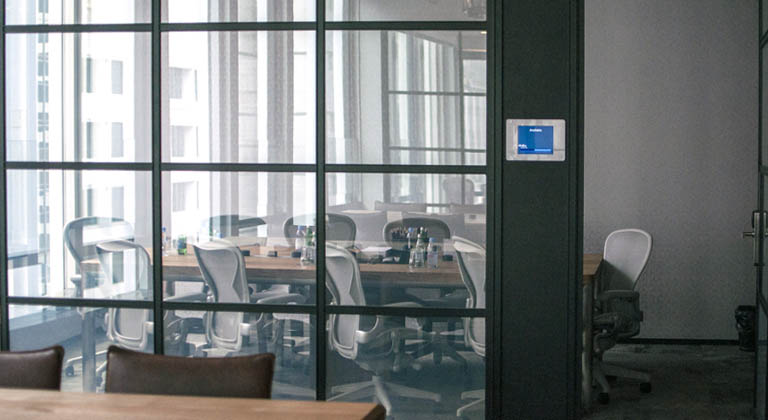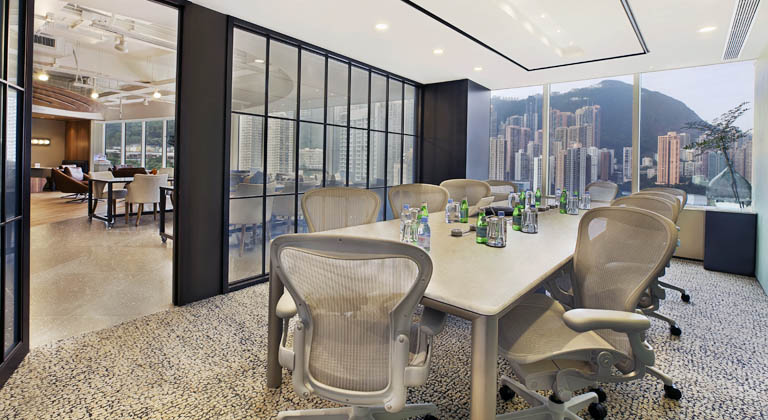Article
What is All-Hands Meeting? Meaning, Purpose & Benefits
In today’s fast-paced digital workplace, where teams are spread across cities and time zones, many may wonder: what is all-hands meeting, and is it still relevant? The answer is yes. While the format may seem traditional, the meaning of an all-hands meeting has adapted to meet modern business needs, serving as a powerful tool to align teams, build trust, and foster a sense of unity across remote or hybrid environments.
In this article, we’ll break down what an all-hands meeting is, explore the all-hands meeting purposes, highlight its key benefits, and share practical tips to help you host effective and engaging sessions.
The Meaning of All-Hands Meeting
What is an all-hands meeting? The term “all-hands meeting” originates from the naval command “all hands on deck,” which means that every crew member is needed. In a business setting, an all-hands meeting gathers all employees, regardless of department or seniority, to receive the same information at the same time.
The all-hands meeting meaning goes beyond just sharing updates. It’s about fostering transparency, celebrating achievements, and strengthening the connection between leadership and staff. While these meetings are often used to discuss key announcements, financial performance, or company goals, they can also be an opportunity for employees to raise concerns, ask questions, and engage in meaningful dialogue.
Ultimately, one of the all-hands meeting purposes is to ensure transparency and alignment, so that everyone is moving in the same direction with clarity and confidence.
The Purposes of All-Hands Meeting
So, what is the purpose of the all-hands meetings? At its core, the purpose is to provide a platform for open communication between leadership and employees. It serves as a touchpoint where everyone can pause, reflect, and align. Here are some common purposes of all-hands meetings:
- Communicate company goals, strategy, or progress
- Address company-wide challenges or upcoming changes
- Share updates that affect multiple teams or the entire organisation
- Recognise and celebrate team or individual achievements
- Reaffirm company culture, values, and mission
All-hands meetings usually convey key messages that affect the entire organisation, allowing leadership to speak directly and authentically to the people who power the business.
Read More: Satellite Office: Meaning, Definition, Benefits for a Company
The Key Benefits of All-Hands Meeting
Understanding the purposes of the all-hands meetings helps reveal why they’re so impactful. More than just a routine event, these meetings build connection, clarity, and culture. Here are some key benefits:
1) Promoting transparency and company-wide alignment
A primary all-hands meeting purpose is to ensure transparency. When leadership openly shares significant company information such as business performance, upcoming goals, or challenges, creating a culture of trust.
It also ensures alignment. When every employee hears the same message, there’s less room for confusion or misinformation. Everyone understands how their work fits into the bigger picture.
2) Enhancing team cohesion and cross-department collaboration
All-hands meetings help break down silos between departments. Employees gain insight into what other teams are working on, which fosters empathy and cooperation. For instance, when marketing understands engineering’s roadmap, or HR sees sales’ new strategies, cross-functional collaboration becomes more natural and productive.
3) Boosting employee engagement and morale
When employees are encouraged to ask questions and contribute ideas during these meetings, they feel more involved. It becomes a two-way conversation rather than a one-sided presentation.
This openness boosts morale and motivation. Employees are more likely to stay engaged when they know their voices matter and their efforts are being recognised.
4) Foster a Healthy Company Culture
The meaning of an all-hands meeting encompasses reinforcing company values and behaviours. These meetings reflect a company’s commitment to open communication and inclusion. They serve as a stage to reinforce company values and behaviours, whether that means recognising a team that exemplified resilience or highlighting diversity and inclusion efforts. Over time, these meetings become cultural rituals that define how the company communicates, supports, and celebrates its people.

Continue Your Learning Journey: Hybrid Workplace Policy: Meaning, Trends and Challenges
When Should You Start an All-hands Meeting?
Determining what your all-hands meeting is for and when to initiate one depends on various factors. While there's no exact time to start hosting all-hands meetings, certain moments make them especially valuable:
- When your team is growing quickly, and alignment becomes harder
- When your organisation is going through major changes, like a rebrand or merger
- When you need to deliver sensitive updates or strategic shifts
- When you want to reinforce your mission, values, and culture
For example, if your company has just acquired another business, an all-hands meeting helps everyone understand the impact, next steps, and vision moving forward. It’s also useful during times of uncertainty, helping reduce speculation and anxiety.
How to Make Your All-Hands Meetings More Interactive and Effective?
Here are the steps for hosting a successful all-hands meeting and the tips for making them more interactive.
i) Clearly Define the Purposes of The All-hands Meeting
Before you schedule the meeting, clarify the purpose of your all-hands meeting. Is it to align on quarterly goals? Announce a new product launch? Celebrate recent wins? A clear purpose guides the agenda and makes the meeting more meaningful.
ii) Set a Date and Invite People Early
Give employees enough notice to plan around the meeting. For global teams, consider time zones and try rotating the schedule if necessary to make it inclusive for everyone.
iii) Set a Clear Agenda and Share It in Advance
A clear agenda keeps the meeting focused. Share it a few days beforehand so employees know the purpose of the all-hands meeting, what to expect, and can prepare relevant questions or feedback.
iv) Collect Questions Ahead of the Meeting
Encourage team members to submit questions anonymously or via a shared document before the meeting. This helps you to identify recurring themes and gives presenters time to prepare thoughtful answers.
v) Keep the Meeting Concise and Respect Everyone’s Time
Avoid going off-topic or repeating information. Aim for a 30–60-minute session depending on your company size. If something requires a deep dive, offer breakout sessions or follow-up materials.
vi) Ensure the Meeting Space (Physical or Virtual) Is Comfortable and Accessible
Whether it’s an in-person town hall or a virtual Zoom call, the meeting space should be inclusive and functional. Make sure video, audio, and screen-sharing tools work flawlessly. If in-person, choose a space that’s easy to access, well-lit, and comfortable.
In a Nutshell: Tips for Running Effective All-Hands Meetings
There are more key elements to consider when selecting a space for an all-hands meeting:
- Choose a location that is accessible and easy to reach.
- Avoid spaces that are too cramped or too empty. TEC provides spaces suitable for all-hands meetings with different themes such as training, celebration, and more.
- Ensure the space has advanced equipment for hybrid and remote meetings to well deliver the purpose of the all-hands meeting. For this, TEC provides dedicated IT and coordinators for technical support.
- The venue should be bright, well-ventilated and comfortable so attendees can stay focused.
- Seating should encourage interaction, such as U-shaped or semi-circle layouts. With TEC, catering can also be arranged to support interactions and breaks.

Find TEC for a Professional Space for Your Next All-Hands Meeting
Now that you understand what an all-hands meeting is, including its meaning, purposes, and strategic value, it’s time to consider a space. Whether it’s for aligning remote teams, delivering major updates, or celebrating success, having the right space can make all the difference. TEC offers flexible, high-performance Meeting Rooms and Event Spaces designed to support modern business needs.
From advanced video conferencing tools to dedicated on-site support, TEC’s Meeting Rooms ensure a seamless experience for hybrid and remote teams. For larger gatherings, TEC’s Event Spaces provide spacious, customizable venues perfect for delivering the purpose of all-hands meetings. Catering services can also be arranged upon request to ensure a smooth, professional event from start to finish. Contact us today to explore the ideal venue for your next all-hands meeting.
Top Picks for You: Holding Company in Hong Kong: Definition and Structure
Frequently Asked Questions
An all-hands meeting is a company-wide gathering that includes employees across all departments and levels. Unlike regular team meetings that focus on specific projects or departments, the purposes of all-hands meetings include providing a platform for leadership to communicate high-level updates, sharing strategic goals, and fostering transparency across the organisation.
In distributed teams, communication gaps are more likely to occur. The all-hands meeting purpose is to bridge those gaps by keeping everyone aligned, informed, and engaged regardless of location.
There’s no universal rule, but many organisations host them monthly or quarterly. The frequency depends on factors such as company size, rate of change, and communication needs.
Today, the all-hands meeting meaning extends beyond simple announcements. It’s about reinforcing company culture, promoting openness, and giving employees a voice in organisational conversations.
An ideal environment for an all-hands meeting should be spacious, well-lit, and equipped with reliable audio-visual technology, especially if remote participants are involved. The space should support video conferencing, have comfortable seating, and offer clear sightlines to the speaker or screen. Accessibility, privacy, and minimal distractions are also important to ensure everyone can focus and participate fully.




